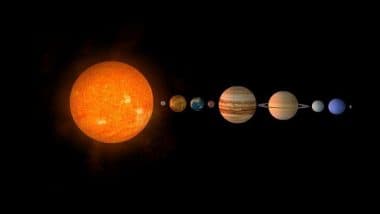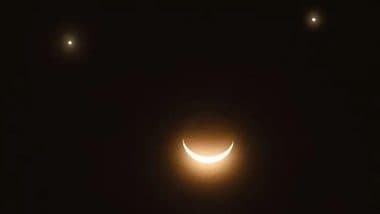All seven planets assemble! 2025 already seems to be a perfect year for astronomy lovers as extraordinary phenomena are occurring in the night sky. While in January, we were captivated by the beautiful sight of a planetary parade슬롯사이트”Venus, Mars, Jupiter, Saturn, Uranus and Neptune, all visible in the night sky. Mercury will join the fun in February, making all seven of our planetary neighbours visible from Earth. So, when is the best time to watch the rare occurrence in India? In this article, we bring you all the details of Planet Parade 2025 of February 28, with all seven planets creating a beautiful alignment.
Planet Parade Meaning
A planetary alignment, famously known as a planet parade, occurs when the planets 슬롯사이트˜line up슬롯사이트� on the same side of the Sun. When this happens, we get to see multiple planets in the night sky. While planet alignments are more common, seeing visible planets simultaneously is rare, making the February 28 celestial event special. Interestingly, the planets always appear along the same arc in the night sky. The path is called ecliptic and it exists because all planets in our solar system orbit around the Sun on roughly the same plane.
How Often Do Planet Parades Occur?
More often than what you might have expected! Well, skywatchers can usually see at least one planet just about every night. In addition, we regularly come across two to three at various points during the year. But when it comes to four or more planets in the night sky, it can be comparatively less, making the Planet Parade 2025 so special. February 28 is the culmination of this planetary alignment. Mercury will be a part of this unique phenomenon, which is usually hard to observe because it is close to the Sun.
When Is the Best Time To View Planet Parade in India?
The best time to view the planet parade is after sunset. Observers will be able to view all the seven planets at the same time. For people in India, the best time to observe this celestial event is shortly after sunset, about 45 minutes after the Sun dips below the horizon. It is essential to be at a location with minimal light pollution to increase the chances of visibility. According to scientists, Mercury, Venus, Mars, Jupiter, and Saturn can be seen with the naked eye, but Saturn might be challenging to spot due to its proximity to the Sun. Uranus and Neptune, being farther, will require binoculars or a telescope for proper viewing.
The February 28 planetary alignment offers a rare opportunity to witness the beauty of our solar system, making it a must-see event.
(The above story first appeared on LatestLY on Feb 26, 2025 09:52 AM IST. For more news and updates on politics, world, sports, entertainment and lifestyle, log on to our website latestly.com).













 Quickly
Quickly


















